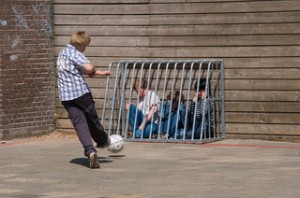We all view bullying differently
Some say ‘that’s life’, ‘I know my kids, they wouldn’t do that’, ‘they’re just going through a rough patch’, ‘they need to toughen up’, ‘oh – that’s kids being kids’ or ‘life’s not meant to be easy’.
How do you justify to a family after a child, teenager, adolescent or adult has committed suicide from the repeated, deliberate hurt whether they sought assistance or not? How would you feel hearing ‘that’s life, ‘toughen up’ or ‘that’s just kids’?
Bullying has been a hot topic in recent times!
While at school I, as a victim of school yard bullying, found it difficult to manage. With parents who both worked and my not wanting to burden my parents with ‘silly unimportant issues’ (that is how it felt at the time) only isolated me further. Perhaps I was fearful that they would speak to my teachers causing further attention to the situation – ‘oh no’! With, what felt like, no-one to talk to, I shared my sadness with my then pet dog.
You may have your own personal experiences that help you relate to others who have been bullied.
It was towards the end of grade 5 that our eldest child shared with me that he was bullied from Grade 1 to roughly Grade 4 – that’s a long time in anyone’s books! He ‘didn’t want to worry me’. Did I notice anything in particular – ‘no’. I thought he was just quiet and found ‘making friends’ challenging. I was however, fortunate enough that my daughter shared with me her bullying experiences as it was occurring.
This was the most opportune time to take action as I was able to support her through each and every stage. We were able to review the day’s events, talk through strategies, role play, practise dialogue, discuss what it might be like for the bully and I think most of all was to explain that standing up to the bully was integral in the learning and development of both her and the bully. That in fact my daughter had an opportunity to mentor by showing the bully that, the behaviour was not tolerated. That every time the bully practised her strategies, my daughter would stand up to her to again, show by example, that bullying will not be tolerated. They were both ‘student and teacher’!
Definition of Bullying

As per the National Centre Against Bullying, initiative of Alannah and Madeline Foundation, ‘Bullying is when someone or a group of people with more power, repeatedly and intentionally causes hurt or harm to another person or group of people who feel helpless to respond’. Follow this link for further information: http://www.ncab.org.au/whatisbullying/
With the above in mind ‘teasing’ would undoubtedly come a very, very close second with ‘bullying’, as teasing can easily escalate into bullying. Therefore context is an integral component when determining whether teasing or bullying has occurred.
Definition of Teasing
Upon searching a definition I discovered several meanings however in general terms it is referred to as criticising or making fun of without raising anger or hurt when both parties understand it is playful, friendly and fun.
So is it fair to assume that the significant difference between bullying and teasing is the repetitive nature and intent?
Identification
According to the Australian Covert Bullying Prevalence Study 1 in 4 students from Year 4 to Year 9 are bullied.
‘Hurtful teasing was the most prevalent of all bullying behaviours experienced by students, followed by having hurtful lies told about them’. http://docs.education.gov.au/system/files/doc/other/australian_covert_bullying_prevalence_study_executive_summary.pdf
The National Centre against Bullying website states some emotional and behavioural signs may include:
- ‘feels ill in the morning’
- ‘becomes withdrawn or starts stammering’
Physical signs may include:
- ‘unexplained bruises, cuts, scratches’
- ‘comes home hungry’
‘Sometimes bullying can be far more hidden. The signs include: A frequent target for teasing, mimicking or ridicule at school’. You can find out more valuable information by clicking on this link: http://www.ncab.org.au/whatisbullying/
Obviously the above refers to signs and symptoms of the victim however let us not overlook what may be happening for the ‘bully’ too.
How do you identify if your child is a bully?
What are characteristics of a ‘bully’?
A person who bullies generally has a positive view of physical and verbal violence or aggression. They are often physically stronger than their victim and may think highly of themselves.
They may also demonstrate these characteristics:-
- Hit or push other children
- May not be popular with other children around the same age
- Show little concern for the feelings of others
- Expect others to behave according to their wishes
- In general are often not taught to consider how their actions may affect others and how they feel.
The above points and more characteristics can be viewed by following this link: http://www.webmd.com/parenting/tc/bullying-characteristics-of-children-who-bully
How can a ‘bully’ in the making be kept from stepping over that line?
Keeping One Step Ahead
Has your child shared their day with you where you have noticed they aren’t quite themselves but nothing too noticeable? Maybe it is the opposite and they share they were upset about something.
- What words do they use to describe what happened?
- What are you hearing?
- Is the message you hear the same as what is being said?
In general terms we may respond with something similar to, ‘oh they’re just teasing, walk away when they do that’, (‘I wonder is it repetitive, intentional and has caused hurt or harm’).
Communication is so broad in terms of interpretation! Is it therefore possible that by default children in general may assume that bullying is ‘just’ teasing and attempt to dismiss it to the best of their ability only to have it haunt them forever more or until they can or feel it is okay to…seek help?
Perhaps each of your family members can share their day at dinner time. Another opportunity is chatting at bedtime.
These opportunities are all key times in keeping one step ahead, seizing the opportunity if it arises to listen or discuss:-
- What the situation is
- What may be your next step e.g
- Speaking with staff in confidence
- Seeking professional assistance
Listening, being heard is a large component of communication and if one believes they are not ‘really’ listened too they will be ‘less likely’ to share.

Through my work I have had and continue to have the honour in supporting both adults and children who have fallen victim to childhood bullying.
The effects have had the unfortunate ‘claw gripping power’- hiding, waiting in the dark shadows playing them like a puppet throughout their life, affecting their everyday choices……..until seeking help.
Sharing those hurtful memories, applying strategies and increasing step-by-step self-belief goes a long way in validating the amazing person they are.
Recently I spoke with a range of young people from the ages of 9 to 16 and asked them a few simple questions.
Here are their responses!
What bothers you most about a bully?
- They just pick on random innocent people – like any one they think of and they think it is okay.
- How they call names and how they can be physical.
- They intentionally try to hurt you – not always physically but mentally as well.
- Mentally is worse because it doesn’t physically show, it might stick with you your whole life – something stuck in your brain and it hurts your whole life. There is no proof so you can’t prove they called you names.
- Physically can heal but if you went to the teachers you have proof with physically bullying.
- They think they can do whatever they want.
- They have no consequences for their actions.
Why do you think bullies bully?
- They have fun doing it.
- Because they want to feel powerful.
- Because they don’t feel powerful anywhere else.
- Maybe because something has happened to them, and they are taking it out on other people.
- Because they have been affected by their own bullying in the past.
- They are trying to fit in.
How do you think a Bully can stop being a bully?
- Recognise that the first step is to say sorry.
- Show you care about others.
- You don’t have to be friends but ‘be friendly to others’.
- Be nice!
- They need to believe they are a good person.
- Bully them so then they can see how bad it is so they can change.
As you can see the young generation are very aware of their environments and are very observant young people. I spoke individually with each of them and they provided me with the above information – interesting isn’t it!
In all the above information one point in particular stood out.
That is – ‘Maybe because something has happened to them, and they are taking it out on other people’.
This point got me thinking!
Is this a way in to observing a bully in the making?
Does a ‘bully’ in the making have the coping mechanisms to deal with that present situation that is happening to them that effects them so deeply they then take out their emotions on others?
How do you manage stress, personal trauma and emotional turmoil?
Are you leading by example?
Does your child have a strategy to manage torments from another?
 This article is only a brief overview of reference material personally viewed and through my professional experience. I believe both parties need support so they may acquire ‘life saving’ strategies and apply them throughout their lives and perhaps share them with others. I hope this information has been helpful and insightful.
This article is only a brief overview of reference material personally viewed and through my professional experience. I believe both parties need support so they may acquire ‘life saving’ strategies and apply them throughout their lives and perhaps share them with others. I hope this information has been helpful and insightful.
Please, contact me by phone or email, if you have any concerns about your child or if you would like to discuss your options and how Kinesiology can support your family during a difficult time.
xo Rosetta

